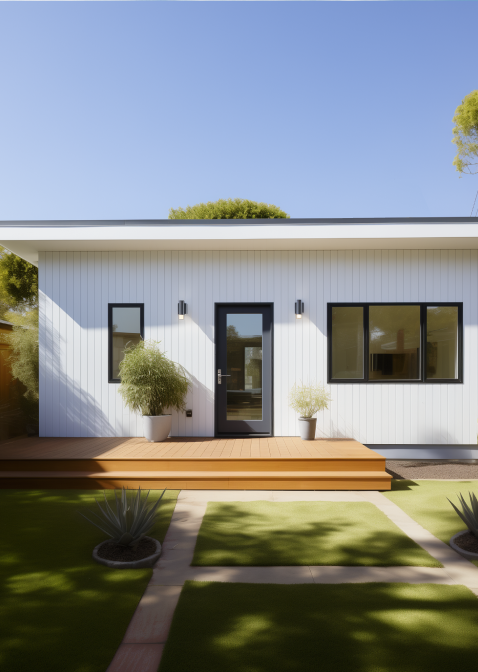When we talk about the ADU construction, first of all, we think about the design of rooms, the architecture of the building, or the choice of bathroom tiles. However, the most important role is played by the details hidden from the eyes, which form the basis and the correct installation, which has a great impact on the future operation of the ADU.
One of these components is insulated concrete forms, which are used for the construction of walls. In the old days, the walls were built of brick, however, this material is short-lived, tends to crumble, and lets in air, as a result, residents suffer from constant drafts. Nowadays, builders have switched to more innovative insulated concrete forms.
In this review, we will talk about what insulated concrete forms are, reveal their advantages when building an ADU, and also share some interesting facts.
Insulated concrete forms or ICF is one of the most powerful and energy-efficient wall systems, which in most cases is used in the construction of one or two-story buildings with a small area. Almost all types of ADU fit this description. ICF resembles a sandwich, because builders pour concrete between two styrofoam slabs, resulting in a very durable and easy-to-install structure.
Inside insulated concrete forms, special plastic or steel ties are placed, which have an outlet to the outside and contribute to a more convenient fastening of drywall or siding. As architects and designers note from insulated concrete forms, it is very easy to make corners and complex geometric shapes, if the room has a non-standard layout.
On the whole, the main distinguishing feature of insulated concrete forms is that they fit snugly to each other without the use of additional mounting mechanisms. However, the advantages of insulated concrete forms do not end there, and in the next part, you will see this.
Insulated concrete forms are a unique construction with a rich history. On the topic of insulated concrete forms, you can give lectures at architectural universities, because they have many unique characteristics and properties.
We have collected for you the most interesting facts about insulated concrete forms:
On the whole, if you are interested in the prospect of building an ADU using insulated concrete forms, then you can discuss this point with your general contractor at the first meeting. Specialists will tell you about all the nuances of installation and operation, and then you will finally form a positive idea about ICF.
The age of wooden houses is already a thing of the past and more advanced technologies have replaced it. We hear everywhere that houses are made of concrete and combinations of different materials, but why are concrete components, and in particular insulated concrete forms, so in demand? We will figure it out now.
One of the most significant benefits of building an ADU with ICFs is its superior energy efficiency. The insulating material used in ICFs creates an airtight seal, minimizing heat loss and reducing the need for heating and cooling. This can lead to significant energy savings for both the homeowner and the tenant. Additionally, because ICFs are made with a combination of recycled and renewable materials, they are more environmentally friendly than traditional building materials.
ICFs are incredibly durable and can withstand extreme weather conditions such as hurricanes, tornadoes, and earthquakes. Because the blocks are made of concrete, they provide superior structural integrity and are less susceptible to fire damage than wood-based materials. This durability also means that ICFs require less maintenance and can last longer than traditional building materials.
ICFs are excellent at soundproofing, creating a peaceful living environment for both the homeowner and the tenant. The insulating foam in ICFs absorbs sound vibrations, which means that noise from outside is significantly reduced. This is particularly beneficial for ADUs built in urban or noisy areas.
ICFs can be constructed faster than traditional building materials, leading to faster completion times and fewer labor costs. The pre-formed blocks can be easily stacked and secured, allowing for quick and easy installation. This faster construction time also means that the homeowner can begin renting out the ADU sooner, leading to quicker rental income.
Building an ADU with ICFs can increase the value of the property. The energy efficiency and durability of ICFs are highly attractive to potential buyers or renters, and they may be willing to pay more for a well-built, eco-friendly structure. Additionally, because ADUs are highly sought after in many areas, having one built with ICFs can make the property more attractive to potential renters or buyers.
ICFs are highly versatile and can be used for various building designs and styles. They can be applied in constructing a wide range of ADUs, from traditional designs to modern, minimalist structures. ICFs can also be used to construct multi-story ADUs.
Overall, the decision to use insulated concrete forms when building an ADU can be fateful. This structure will provide the basis for future comfortable living and will get rid of a lot of potential household problems.











